Did you know that rue Saint-Jacques is the oldest street in Paris?
Let’s learn more about this 2,000-year-old thoroughfare that crosses the Latin Quarter (5th arrondissement).
Created in the 1st Century BC, the street was one of the main thoroughfares of Lutetia, the Via Superior, which crossed the town from North to South.
How come Rue Saint-Jacques is Paris’ oldest street?
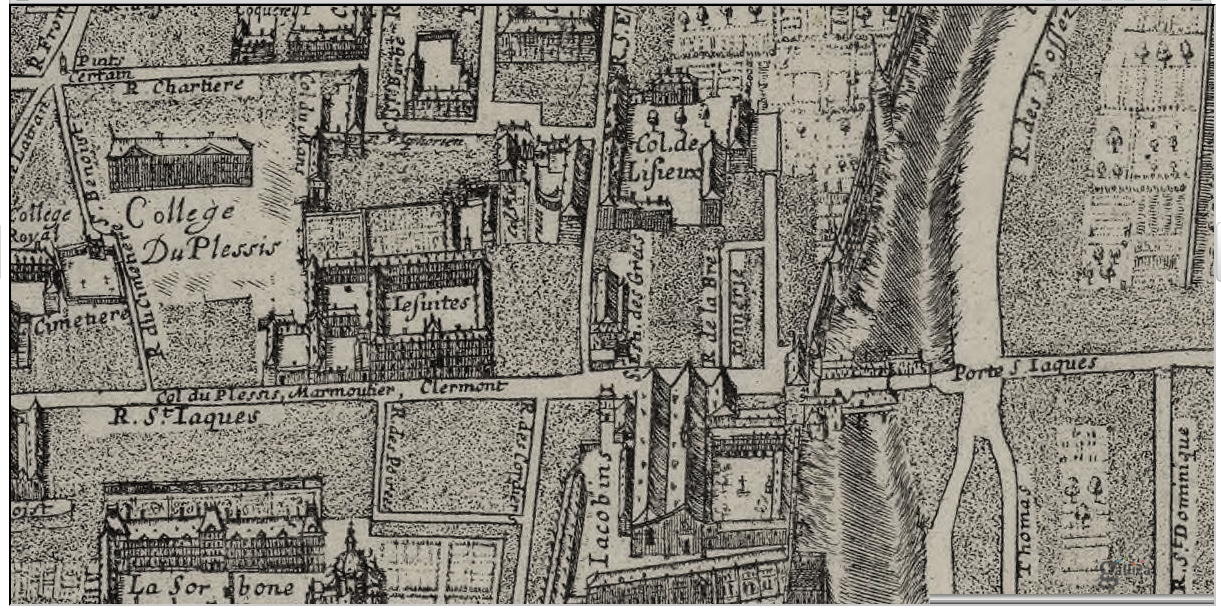
Some 2,000 years ago, during the Roman era, Lutetia (ancient Paris) covered the Ile de la Cité and extended to a slight stretch of the Right Bank.
But the central part of the city occupied the Left Bank of the Seine.
There was the forum with its basilica and temple, the public baths and the amphitheatre.
The cardo maximus
First, Roman Paris was organised according to the cardo maximus.
This was the name the Romans gave to a city planning model applied in towns in Italy. In turn, the Romans borrowed it from the Greeks.
The cardo maximus referred to a town layout based on a primary north-south axis.
That street was crossed in the middle by a less-important east-west axis called Decumanus Maximus, which served as a secondary main street.
The grid plan was adapted to the local topography in Lutetia, so the cardo maximus climbed Sainte-Geneviève Hill, where the Panthéon now stands.
The fact that the hill rose 23 metres above the river meant that flooding could not reach the buildings.
Two roads meeting on the Ile de la Cité represented the north-south axis.
The south road coming from Spain via Orléans is today’s rue Saint-Jacques.
Another road from Rome via Lyon and Melun followed today’s rue Mouffetard and rue Galande.
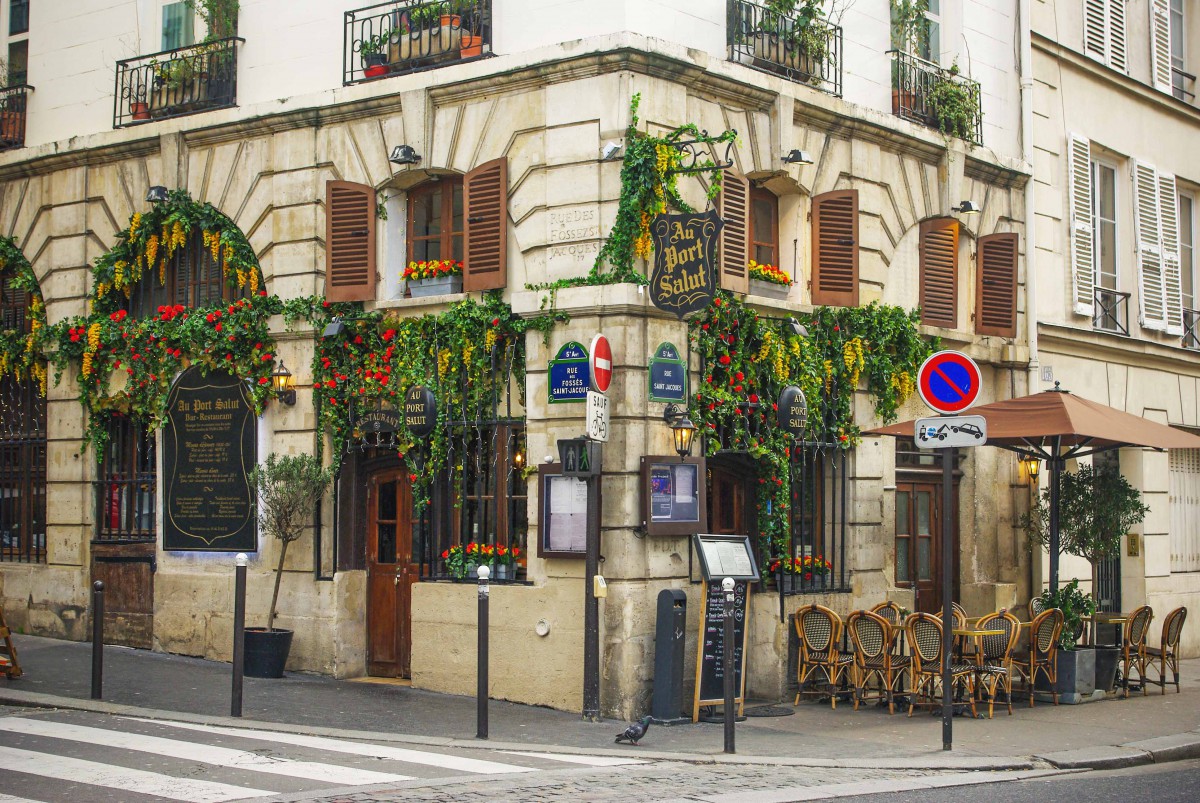
Beyond the Left Bank
On the Right Bank, the cardo maximus is continued by today’s rue Saint-Martin.
Two wooden bridges spanned the river to reach the Ile de la Cité: Petit-Pont on the Left Bank and Grand-Pont (Pont Notre-Dame) on the Right Bank.
Several less important east-west axes crossed the cardo maximus on the Left Bank. The Decumani followed today’s rue Cujas, rue des Ecoles and rue des Fossés Saint-Jacques.
Rue Cujas was probably the Decumanus Maximus, the central east-west axis.
Why? The Forum, the city’s principal landmark, was at the intersection of the Cardo and Decumanus maxima.
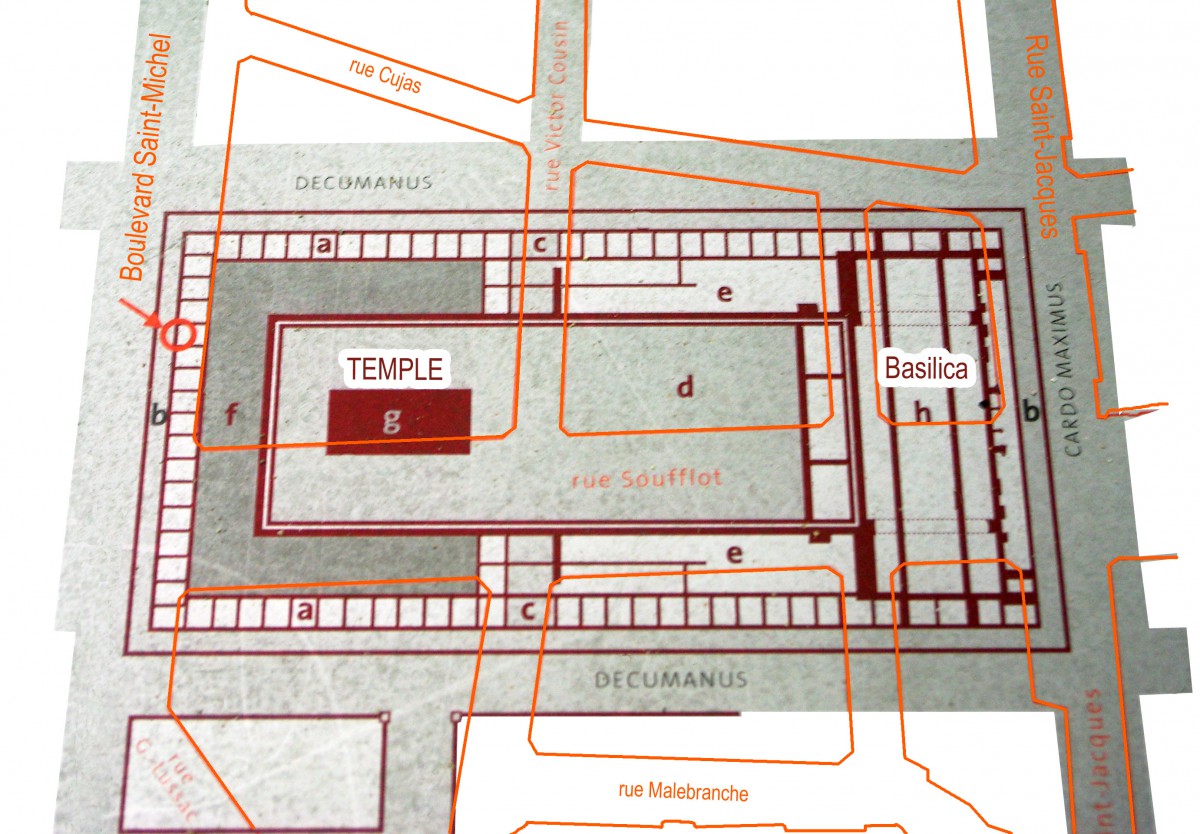
Rue Saint-Jacques: a safe place!
The central part of the city was on the left bank of the Seine, which was higher and less prone to flood.
The centre point where Cardo and Decumanus met is at 172-174 rue Saint-Jacques.
From there, the grid pattern of Lutetia was drawn, forming a network of orthogonal roads that divided Lutetia into insulae (blocks of houses and public buildings)—yes, blocks like in New York City!
These blocks measure 300 Roman feet, a square close to 89 by 89 metres.
So, to reply to the question of which is Paris’ oldest street, I would say that Rue Saint-Jacques is the oldest urbanised street.
The street after the Roman era

However, its width has varied over time, and most of the houses along it were built between the 18th and 20th centuries.
And the roadway is higher than the ancient Cardo.
During the Middle Ages, pilgrims to Santiago de Compostela frequented the street, hence its name (rue Saint-Jacques = St. James street).
Its name comes from an old chapel in a medieval Dominican convent (1218). The chapel was dedicated to St. James (Saint Jacques), and its name was given to the thoroughfare.
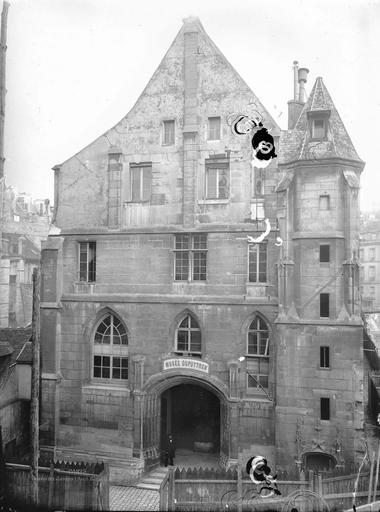
Besides, the street used to be called Grand’rue du Petit-Pont or Grand’rue Saint-Jacques-des-Prêcheurs.
Parisians gave it its current name in 1806.
Therefore, the street lost its importance in the 19th century when Prefect Haussmann created a much broader street parallel to it: boulevard Saint-Michel.
Monuments and landmarks along rue Saint-Jacques
Several interesting monuments and landmarks border Rue Saint-Jacques:
Saint-Séverin-Saint-Nicolas church
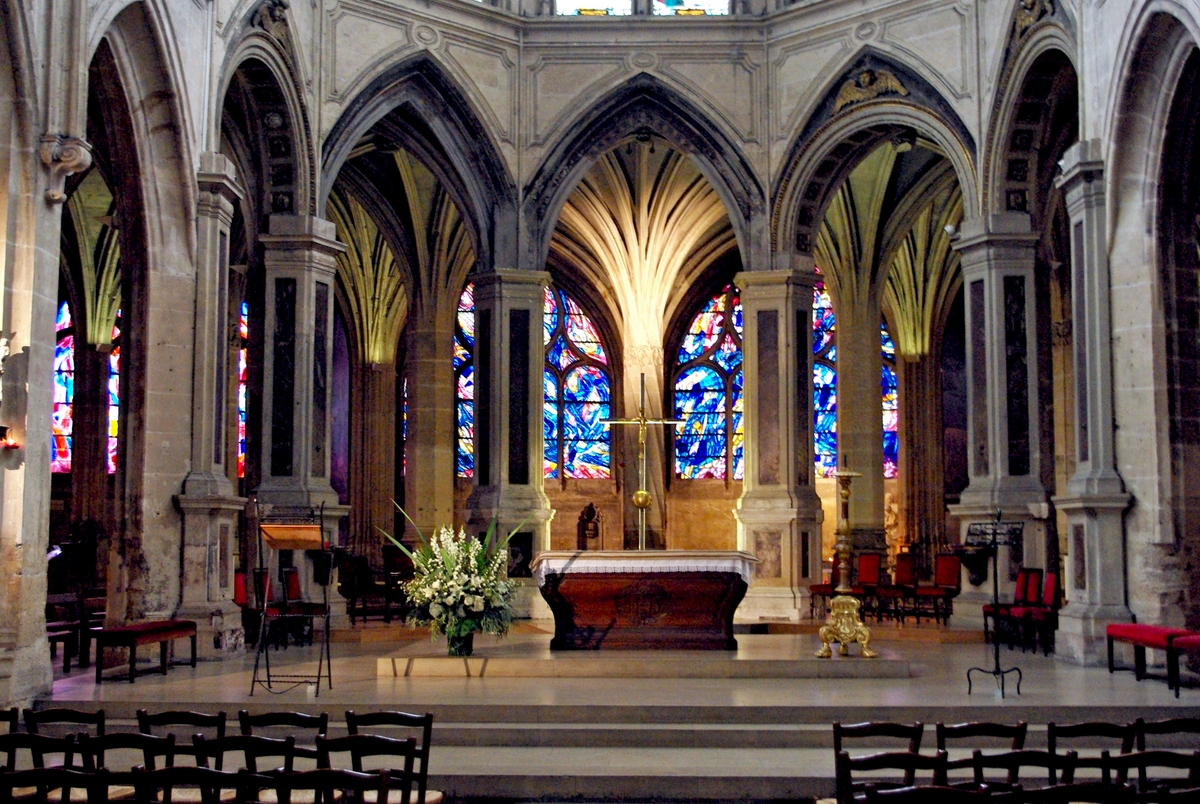
Arguably one of the most beautiful Gothic churches in Paris!
Saint-Séverin church is a Flamboyant Gothic sanctuary built in the mid-13th century and finished in the 15th century.
The façade (on rue des Prêtres Saint-Séverin) dates from the 13th century.
It includes a portal that once belonged to an Ile de la Cité church, demolished in 1837.
Inside, don’t miss the Flamboyant pillar in the centre of the double ambulatory.
It takes the form of the trunk of a palm tree.
The Sorbonne university
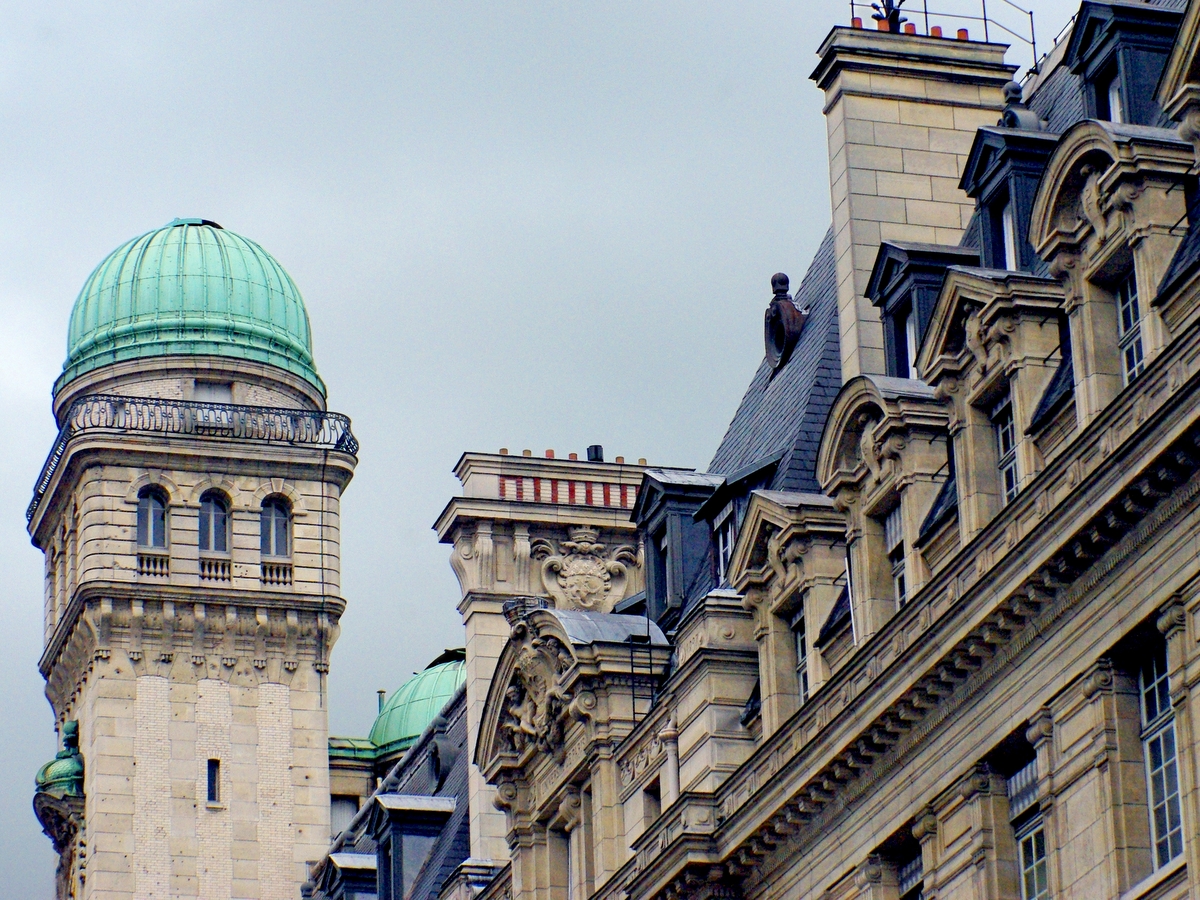
The east side of the world-famous Sorbonne University borders rue Saint-Jacques.
It is an old College of Theology founded by a royal chaplain, Robert de Sorbon, in the mid-13th century and became the seat of the University of Paris.
The present-day buildings date back to 1885.
Saint-Jacques-du-Haut-Pas church
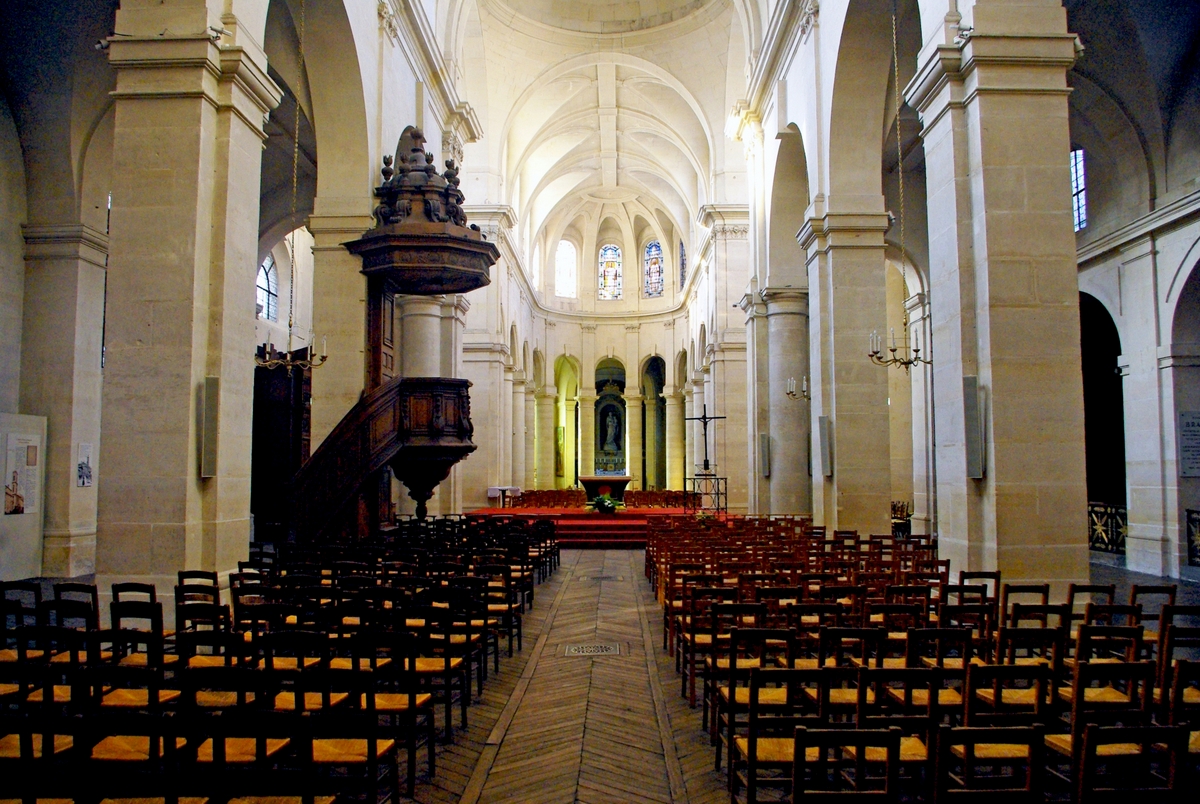
Gaston of Orléans, brother of King Louis XIII, laid the foundation stone of the catholic church in 1630.
The neo-classical sanctuary was completed in 1684.
Its façade shows a decoration with four columns supporting an entablature and a triangular pediment.
A square tower flanks its south part.
Val de Grâce hospital
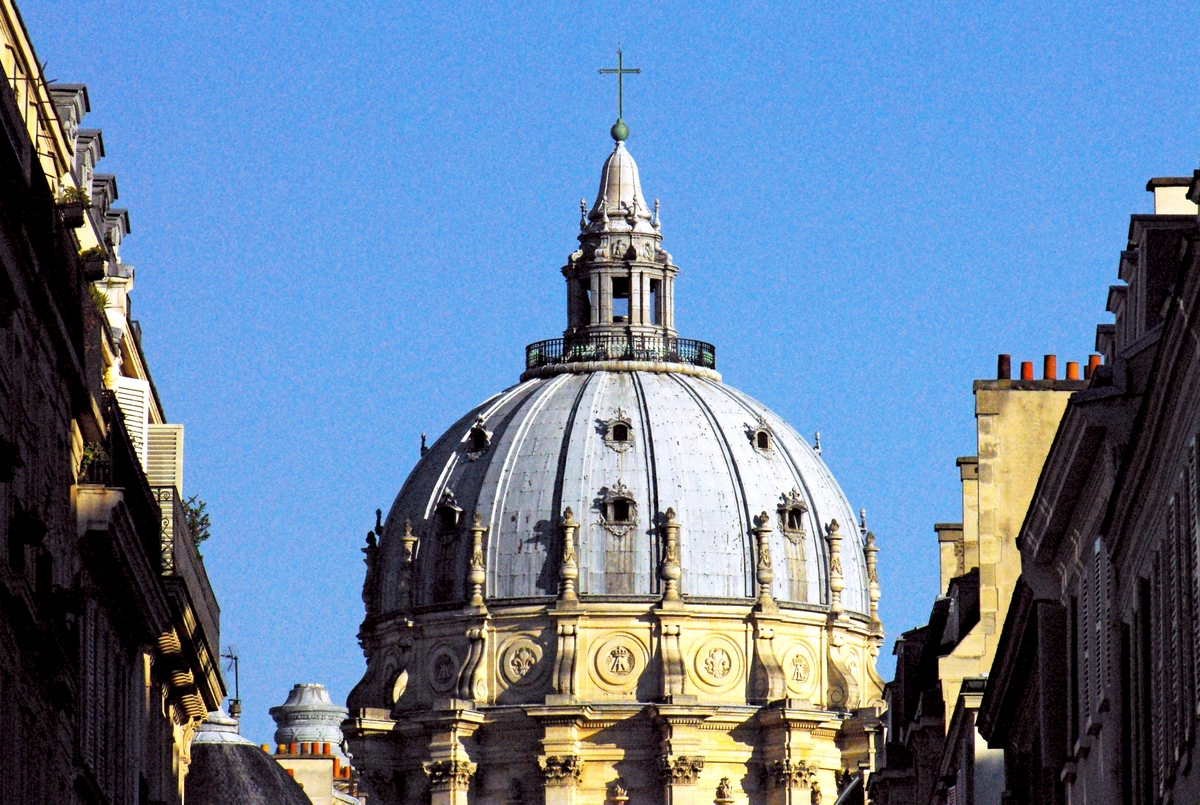
The church of Val de Grâce has one of Paris’ most impressive domes.
The Gesù Church in Rome inspired the Baroque church.
Architect Lemercier built the Val de Grâce between 1645 and 1665.
Its façades show a double series of superimposed columns and two triangular pediments.
In addition, the magnificent dome is one of the highest in Paris.
Finally, the Val de Grâce gives onto a lovely square with Haussmannian buildings: Place Alphonse Laveran.
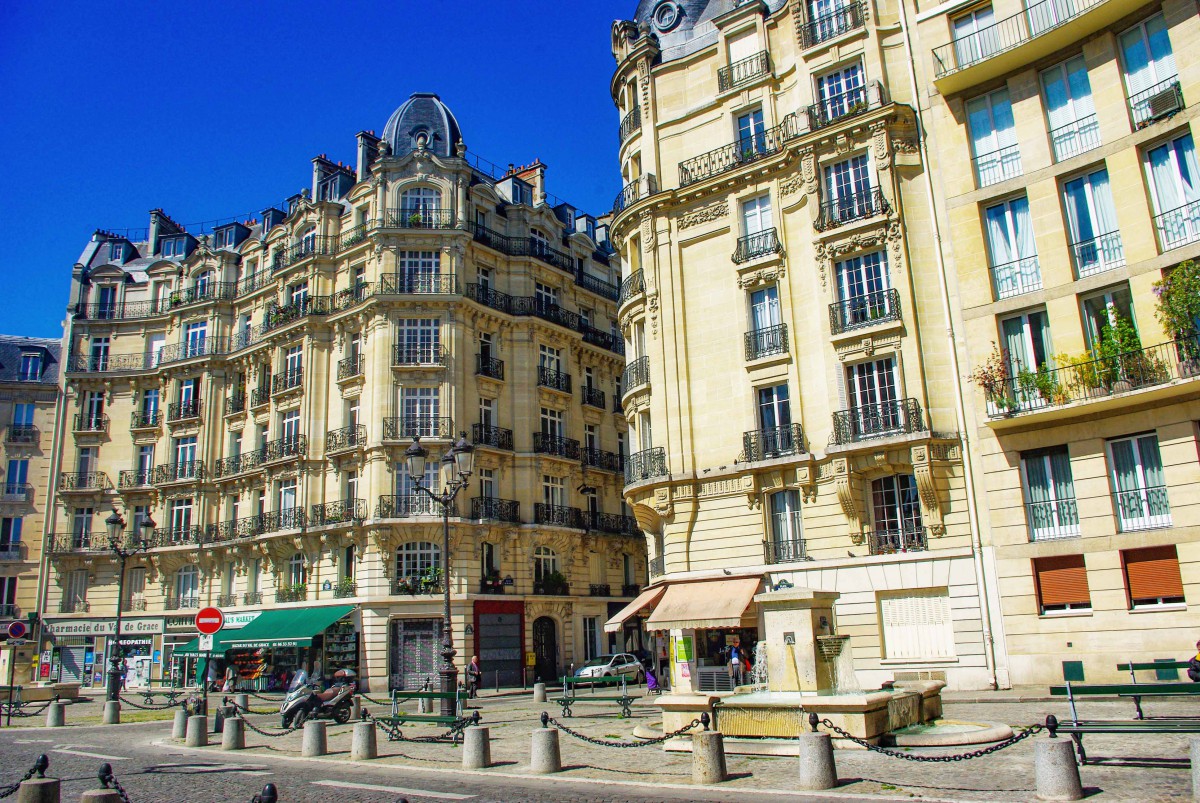
A curious sundial made by Salvador Dali himself!
At number 27, rue Saint-Jacques is one of the most interesting sundials in Paris.
Salvador Dalí (1904-1989) designed it as a present to his friends who owned a boutique at this address.
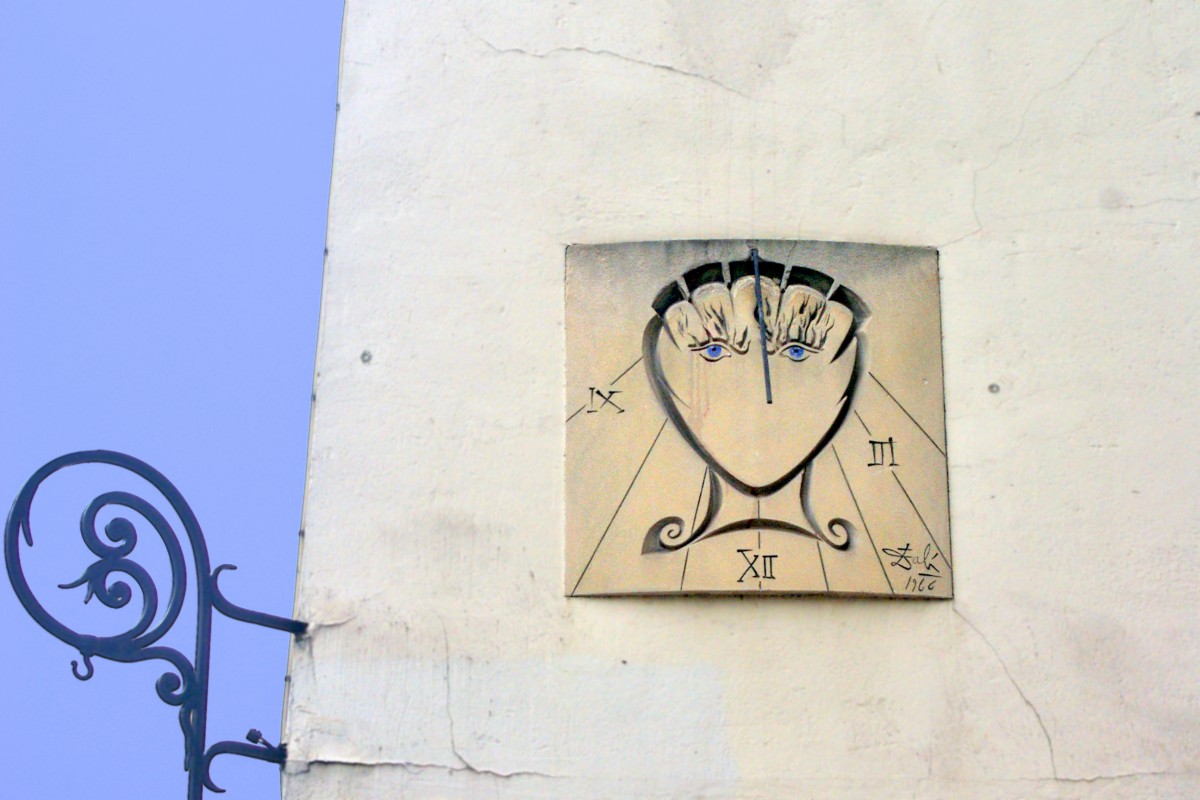
Find out more about Salvador Dali’s sundial in this post!
A tragic explosion in June 2023
On the 21st of June 2023, an explosion at no. 277, Rue Saint-Jacques made headlines around the world.
![Paris American Academy explosion 21 June 2023 © Paul Maxwell - licence [CC BY-SA 4.0] from Wikimedia Commons](https://frenchmoments.eu/wp-content/uploads/2015/10/Paris-American-Academy-explosion-21-June-2023-©-Paul-Maxwell-licence-CC-BY-SA-4.0-from-Wikimedia-Commons.jpg)
The explosion, which injured around fifty people and one dead, is suspected to have been caused by a gas leak.
The explosion caused the collapse of the 17th-century pavilion, which closed off the Notre-Dame du Val-de-Grâce church courtyard to the northwest, a stone’s throw from the historic military hospital of the same name.
The destroyed building, listed as a historic monument, housed a public school, the Paris American Academy and will have to be rebuilt identically.
![277 Rue Saint-Jacques © LPLT - licence [CC BY-SA 3.0] from Wikimedia Commons](https://frenchmoments.eu/wp-content/uploads/2015/10/277-Rue-Saint-Jacques-©-LPLT-licence-CC-BY-SA-3.0-from-Wikimedia-Commons-scaled.jpg)
Pin it for later!

More about Paris’ oldest street and its neighbourhood
- Our page on the 5th arrondissement (and Latin Quarter)
- The hidden remains of the Roman forum of Lutetia
- The sundial of Salvador Dali (rue Saint-Jacques)
- Get your tickets to the monuments and museums of Paris (and Skip-the-Line!)





It would probably be encyclopedic in length, but I’d be delighted to have a list of all the rues and blvds of Paris with how and when they got their names, but for today I’ll ask only about rue des Mauvais-Garcons,in the 4th.!
Yes, that’s a good one! The name is so compelling too 😉
I would love you to do one of these on my favourite street in Paris. Rue de l’Abreuvoir
Thanks
Thanks! I have published an article on Montmartre and there is a part dedicated to rue de l’Abreuvoir. Here’s the link > https://frenchmoments.eu/montmartre-paris/ ?
In 1988 I stayed in the Hotel de Médicis at 214, rue St.-Jacques. It was then owned by M. and Mme. Rault who had precvisly owned and operated the Hotel Stella at 41, Rue Monsieur-le-Prince. Jim Morrison of The Doors stayed at the Médicis for a week in July 1970 and died in Paris the following year. In 2007, the Médicis was described by one of its last American occupants as "One of the great old fleabag hotels in the Latin Quarter." The Médicis closed its doors on January 10, 2008. After a year and half of renovations, it reopened as the upscale Hotel le petit Paris, with interiors designed the the acclaimed Sybille de Margerie. C'est la vie!
Thank you, Ronald for this fantastic anecdote! 🙂